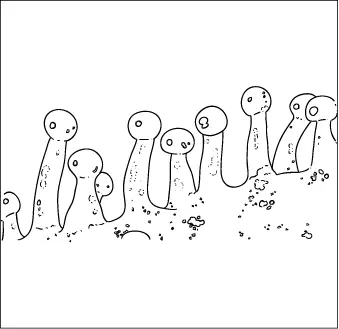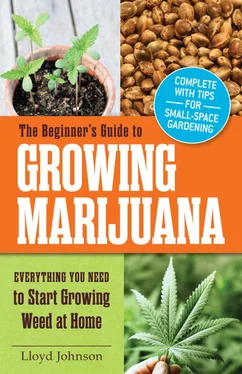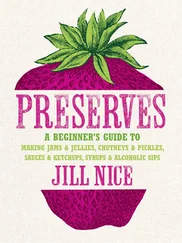The Vegetative Phase
The first transplant for seedlings is usually from their little four-inch starter pots to a three- or five-gallon container. This will allow enough room for the plants to grow while they make their sexual determination.
Once the plants are in their container they will enter their vegetative phase of growth, where they grow roots and gain size, as well as build strong stems and lots of healthy green leaves. During the vegetative phase, the plants will need plenty of water and more nitrogen than during the flowering phase. Cannabis is light sensitive and requires a light trigger to begin the phase of flower development so desired by cannabis growers.
If you plan to make clones from this crop, now is the time to take cuttings. It is possible to clone from a flowering plant, but this is not advised. It takes the cutting far longer to root, and the new little plant may try to flower right away. An eight-inch flowering plant is really not of much use or desirable in any way.
Keep It Simple
If you start from clones that are known females, you can put them right into their largest container. They need to be large enough to thrive on their own. If clones are still tiny and will eventually be planted directly into the ground, they will benefit from an interim transplant until they grow enough to be safely ground planted.
Transition to Flowering Phase
The plants will grow until daylight shortens to twelve hours. This is the sign or trigger to the plants to begin flowering. The days remaining for reproduction are dwindling, and the plants will strive to complete the flowering and seeding stages, which is their natural goal.
If you plan to breed for seed, you need to isolate a male or males of preferred lineage and collect and label their pollens. As soon as the female plants show pistils, you can pollinate selected branches to create new hybrids and fresh seed for next year. You can continue to breed the females until harvest time, but late breedings will not give the plants enough time to produce mature and viable seeds.
As the plants grow flowers, their vegetative growth will slow and then stop. They are concentrated on reproduction, and a large array of healthy, resin-covered flowers is their natural way to catch wind-borne pollen. You will have mostly frustrated this goal by removing the males and selectively breeding, but the plants will not know this and produce resins as fast as they can. At this time, stop feeding them nitrogen, and increase the ratio of phosphorus and potassium that the plants need for flowering.
During this phase, groom the plants by removing yellowed leaves and clearing any plant debris that falls to the ground. This will decrease pest infestations, and is essential in preventing different molds that affect cannabis plants (and particularly the flowers).
The End of the Cycle to Harvest
Different hybrids, and even different plants within a strain, will complete their flowering at different times. Some strains finish as early as early September, while others, typically sativa types, take weeks longer to maximize resin production and finish. Sometimes you will be forced to take the late finishers in to hang a little sooner than you would like. This is a trade-off: Leaving the plants out can sometimes improve the quality of the finished product, but a rainy fall and late harvest leads to mold and the subsequent loss of buds.
Harvesting Outdoor Plants
If you love and grow cannabis, there is probably nothing more fun than harvesting a healthy, gorgeous outdoor plant. Not all of the plants will come in at once; this is an advantage of the outdoor grow, as indoor growers generally take all their plants at once and must process them at once, too.
As the flowers mature, watch the trichomes closely. Some growers like to take the plants while the trichomes are still clear. There is some indication that the clearer trichomes produce more of a psychoactive effect. Other growers wait until the trichomes are just starting to turn toward amber in color; they claim this produces more of a “stony” effect. A lot of the effects are due to genetics, but it is definitely important to not let the trichomes go dark amber; the plant resins are starting to deteriorate at this point and heading in the direction of diminishing returns.

Enlarged image of trichomes (resin) on a cannabis flower.
Keep It Simple
Even if you grow legally, it is usually wise to take plants in when it is dusk or at some point when you will not be easily observed. It is very possible that someone, like a ripper, has been watching you to see when the plants are ready. If you harvest one or two, that is a signal to the rippers to come in and clear your crop site.
Harvesting Essentials
Generally it is easier to have a helper when you harvest large outdoor plants. One person can hold and steady the plant while the other cuts the trunk. Have a clean tarp lying open to lay the plant on; you do not want any dirt in your lovely colas. If the plants are wet, shake as much moisture out as possible.
Some plants are so large it makes sense to cut them in sections. This is fine as long as you have labels for each section. Always remove the labeled seed branch and hang it in a special spot just for your seeders; this way you will not lose track of it, which is easy to do with a largish crop.
Once your plants are safely indoors and hanging to dry, you still have to keep monitoring and acting decisively if you spot mold. Also be sure to keep your drying shed locked and preferably monitored twenty-four hours a day until the harvest is dried and manicured.
After-Harvest Instructions
After the harvest is completed, the good outdoor grower goes out into the site and does some cleanup and preparation for next year by removing old cannabis leaves that might encourage pests, pulling old root balls, and layering compost materials over the in-ground spots to mellow through the winter.
The outdoor grow has one more advantage, and it only happens once a year. The outdoor grower, like any farmer, gets a winter break.
CHAPTER 11
The Growing Cycle (Outdoors)
Outdoor growers tend to have a much longer relationship with individual plants, unlike the indoor grower, who has a twelve-week cycle. This long-term interaction often generates true affection for each plant as a living entity, especially if the growers are working with small crops of ten to twenty plants. First-time growers of outdoor cannabis will have a far greater chance of success if they do their homework first, and also prepare for several months of activity. That being said, just like any other gardening activity, growing cannabis outdoors in a low-key, casual manner can result in a fairly bountiful crop. Nature is going to help you, and the characteristics of cannabis will help you, too.
Understanding Nature’s Schedule
Cannabis is a plant that craves warmth. Depending on where you live, the return of sunlight and warmth in the spring can be as early as the end of March or as late as mid-June. Trying to germinate seed or transplanting to an outdoor site when the temperatures are still wintery is a waste of time and potential plants.
The best way for a first-time outdoor grower to find out when to start is to contact the local Extension Service. These are usually state-funded agricultural information resources, but a quick look at your county government listings should supply a phone number or website address. Obviously, you will not ask about proper timing for planting cannabis, but inquiring about tomatoes will elicit the information you need. The Extension Service records information like local dates for the last and first frosts, as well as rainfall averages for different microclimates. This information will be very useful to you as you plan your schedule for the outdoor grow.
Читать дальше













